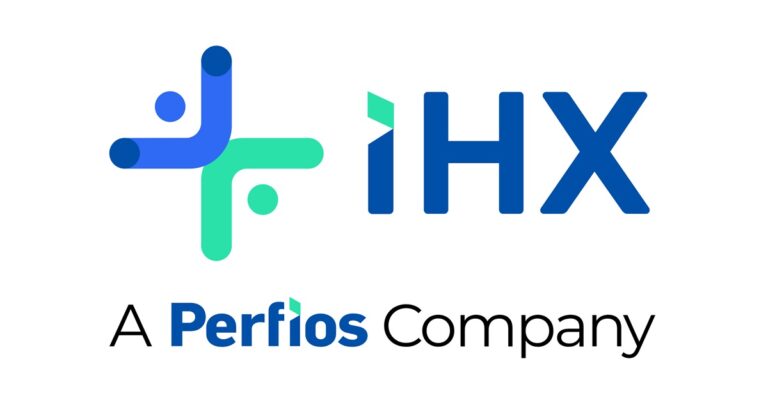HR professionals in India are beginning to understand the immense value of people analytics. This field uses data and insights to improve HR decision-making in recruitment, employee engagement, and performance management.
To understand how to get started with people analytics, it is essential to grasp the foundational steps and knowledge required. Utilizing people analytics is a game-changer for Indian organizations—whether startups, SMEs, or large corporations.
This data can help address unique challenges like high attrition rates, skill gaps, and compliance with labor laws. This article will explore what people analytics is, why it matters, and how Indian companies can harness its power effectively.
What is People Analytics?
People analytics and HR analytics refer to collecting, analyzing, and interpreting workforce data, with people analytics extending beyond traditional HR metrics to include a broader range of data sources. It involves applying statistical tools, predictive modeling, and machine learning techniques to understand patterns and trends in employee behavior.
Key Components of People Analytics
Data Collection
You need to gather comprehensive employee data from various sources, such as HR management systems (HRMS), performance reviews, and employee surveys.
Data Analysis
Using tools to process and interpret the data can help in generating effective and actionable insights. You can use various tools to process and interpret the data for actionable insights.
Predictive Modeling
With people analytics, you can forecast future trends, such as attrition rates or skill shortages. Having this knowledge gives you the opportunity to get started on solutions to the problems that are still in the future.
Visualization
People analytics tools present data in easy-to-understand formats like dashboards and charts. This increased the retention of knowledge at an impressive rate.
Why is People Analytics Important?
Improved Decision-Making
People analytics helps HR professionals move from intuition-based decisions to data-driven strategies.
Enhanced Employee Engagement
Insights from people analytics can reveal factors affecting employee satisfaction and engagement.
Cost Optimization
Identifying inefficiencies in hiring, training, or retention strategies saves resources is one of the key functions of analytical tool.
Compliance and Risk Management
With people analytics tools, you can also ensure adherence to Indian labor laws and reduce legal risks.
Diversity and Inclusion
Thanks to the insights from people analytics, organizations can monitor and improve their diversity metrics.
Steps to Leverage People Analytics Effectively
Define Clear Objectives
How to get started with people analytics involves defining clear objectives to ensure a focused approach. Start by identifying the challenges you want to address. Some examples include:
- Reducing employee turnover in key roles.
- Improving the quality of hires.
- Enhancing workforce productivity.
Collect Relevant Data
To get started with data collection, gather data from multiple sources, including:
- Employee records (demographics, performance, tenure).
- Surveys (engagement, satisfaction, feedback).
- Attendance and leave records.
- Exit interviews and turnover data.
Ensure the data complies with privacy regulations like the IT Act, 2000, and any future data protection laws in India.
Invest in the Right Tools
Choose tools that suit your organization’s size and complexity. Some popular HR analytics platforms in India include:
- Darwinbox: Offers advanced analytics for workforce management.
- Keka: Provides insights into attendance, payroll, and employee performance.
- Zoho People: Features customizable dashboards for data visualization.
Analyze the Data
Use analytics techniques like:
- Descriptive Analytics: To understand past trends (e.g., attrition rates over the past year).
- Predictive Analytics: To forecast future scenarios (e.g., which employees are at risk of leaving).
- Prescriptive Analytics: To suggest actions (e.g., tailored training programs to boost productivity).
Share Insights with Stakeholders
Present your findings in a clear, actionable format. Use visual dashboards and charts to make the data accessible to decision-makers.
Implement Data-Driven Strategies
Act on the insights gained. For example:
- If analytics shows that long working hours correlate with high attrition, consider flexible work policies.
- If certain training programs lead to better performance, expand them across teams.
Monitor and Adjust
Continuously track the outcomes of implemented strategies and refine them as needed.
Trends in People Analytics
People analytics is a rapidly evolving field, with new trends and technologies emerging every year. Here are some current trends in people analytics:
The Increasing Use of Artificial Intelligence (AI) and Machine Learning (ML)
AI and ML are transforming people analytics by enabling more accurate predictions and personalized insights. These technologies help HR teams identify patterns and trends that were previously difficult to detect.
The Growing Importance of Data Visualization and Storytelling
Effective data visualization and storytelling are crucial for making complex data accessible and understandable. HR professionals are increasingly using visual tools to present insights in a compelling way.
The Need for More Accurate and Reliable Data
As people analytics becomes more sophisticated, the demand for high-quality, reliable data is growing. Organizations are investing in better data collection and management practices to ensure the accuracy of their analytics.
The Increasing Use of Cloud-Based HR Systems and People Analytics Platforms
Cloud-based solutions offer scalability, flexibility, and ease of access, making them popular choices for people analytics. These platforms enable real-time data analysis and collaboration across teams.
The Growing Importance of Diversity, Equity, and Inclusion (DEI)
DEI is becoming a central focus in people analytics, with organizations using data to monitor and improve diversity metrics. This trend reflects the broader societal push towards greater equity and inclusion in the workplace.
These trends reflect the changing needs of organizations and the evolving role of HR in driving business outcomes. Staying abreast of these developments can help HR professionals leverage people analytics more effectively.
Use Cases of People Analytics in HR
Recruitment
- Problem: High costs due to bad hires.
- Solution: Analyze historical hiring data to identify patterns of successful candidates, improving future recruitment decisions.
Retention
- Problem: High attrition rates in specific departments.
- Solution: Use predictive analytics to identify employees at risk of leaving and implement retention strategies, such as career development plans.
Performance Management
- Problem: Difficulty in identifying high performers.
- Solution: Leverage performance review and feedback data to recognize top talent and reward them appropriately.
Employee Engagement
- Problem: Low engagement scores in remote teams.
- Solution: Use survey data to understand challenges and implement targeted initiatives like virtual team-building activities.
Workforce Planning
- Problem: Skills mismatch in upcoming projects.
- Solution: Analyze skills data to plan training programs or hire talent with the required expertise.
Challenges in Implementing People Analytics
Data Quality Issues
Incomplete or inconsistent data can lead to inaccurate conclusions.
Privacy Concerns
Ensure data collection and usage comply with privacy laws and ethical guidelines.
Lack of Expertise
HR teams need to be trained properly to effectively understand and utilize various analytics tools.
Resistance to Change
Employees and managers may be skeptical about data-driven decisions generated through analytics tools.
How to Overcome Challenges
- Invest in Training: Provide analytics training to HR professionals.
- Prioritize Data Privacy: You need to adopt secure systems and transparent policies for data handling.
- Start Small: Begin with pilot projects to demonstrate the value of analytics before scaling up.
- Engage Stakeholders: Involve employees and managers in the process to build trust and acceptance.
The Importance of Data Ethics in People Analytics
Data ethics is a critical aspect of people analytics, as it involves the collection, analysis, and use of sensitive employee data. Here are some key considerations for data ethics in people analytics:
Ensuring Transparency and Consent in Data Collection and Use
Organizations must be transparent about how they collect and use employee data. Obtaining informed consent from employees is essential to maintain trust and compliance.
Protecting Employee Data from Unauthorized Access and Breaches
Implementing robust security measures is crucial to safeguard employee data from unauthorized access and breaches. This includes using encryption, access controls, and regular security audits.
Ensuring Data Quality and Accuracy
High-quality, accurate data is the foundation of effective people analytics. Organizations should invest in data management practices to ensure the reliability of their data.
Avoiding Bias and Discrimination in Data Analysis and Decision-Making
It’s essential to identify and mitigate any biases in data analysis to ensure fair and equitable decision-making. This includes using diverse data sets and regularly reviewing algorithms for potential biases.
Ensuring Compliance with Relevant Laws and Regulations
Organizations must comply with data protection laws and regulations, such as GDPR and CCPA. This includes implementing policies and practices that align with legal requirements.
By prioritizing data ethics, organizations can build trust with their employees, ensure compliance with regulations, and maintain the integrity of their people analytics initiatives. Ethical practices in people analytics not only protect employee rights but also enhance the credibility and effectiveness of HR strategies.
People Analytics Tools and Software
There are various people analytics tools and software available in the market, each with its own strengths and weaknesses. Here are some popular people analytics tools and software:
- Visier: A cloud-based people analytics platform that provides insights into workforce trends, talent management, and business outcomes. Visier is known for its user-friendly interface and robust analytics capabilities.
- Crunchr: This platform offers data visualization, reporting, and analytics capabilities, making it easier for HR teams to interpret and act on workforce data.
- Tableau: A powerful data visualization tool that helps HR teams create dynamic dashboards and gain insights into workforce data. Tableau is widely used for its flexibility and integration capabilities.
- One Model: Focuses on data integration and predictive analytics, helping organizations make informed decisions based on comprehensive data analysis.
- Eightfold AI: An AI-powered talent management and workforce planning platform that helps organizations identify skill gaps and improve hiring processes. Eightfold AI leverages machine learning to provide actionable insights.
When selecting a people analytics tool or software, it’s essential to consider factors such as data quality, scalability, user-friendliness, and integration with existing HR systems. Choosing the right tool can significantly enhance the effectiveness of your people analytics initiatives.
Conclusion
People analytics is revolutionizing HR practices across India. Organizations can make smarter decisions, improve employee experiences, and achieve long-term business goals by effectively leveraging data.
For Indian companies, embracing people analytics isn’t just about staying competitive; it’s about creating a workplace where employees feel valued and empowered. Start small, invest in the right tools, and build a culture that thrives on insights and innovation.






